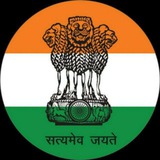tg-me.com/CSE_EXAM/42954
Last Update:
🔆 World Day Against Child Labour (WDACL)
✅ Observed every year on June 12 under the International Labour Organization (ILO)
✅ Aims to raise awareness and bring together stakeholders to eliminate child labour
✅ Linked with Sustainable Development Goal (SDG) Target 8.7, which seeks to end child labour in all forms by 2025
📍 Prevalence of Child Labour
✅ Globally, around 160 million children are engaged in child labour, i.e., 1 in every 10 children
✅ The Africa, Asia and the Pacific regions together account for almost nine out of every 10 children being in child labour
✅ COVID-19 pandemic worsened conditions, forcing many children to leave school and work
📍 Child Labour in India
✅ Census 2011 estimated that 43.53 lakh children (5–14 years) engaged in child labour due to factors such as poverty, non-accessibility and illiteracy
✅ Child labour is preferred in beedi, carpet-weaving and firework factories
📍 Legislative Framework:
✅ India enacted the Child Labour (Prohibition and Regulation) Act (CLPRA) in 1986
✅ National Policy on Child Labour, 1987 sought a gradual and sequential approach with focus on rehabilitation
✅ National Child Labour Project (NCLP) implemented in high-incidence areas
✅ CLPRA Amendment Act, 2016:
▪ Prohibits employment of children below 14
▪ Prohibits employment of adolescents (14–18 years) in hazardous occupations
✅ Right to Education mandates free and compulsory education to all children aged 6 to 14 years
📍 The Velpur Model (Success Story)
✅ Velpur Mandal, Nizamabad district (Telangana) was once notorious for child labour
✅ In 2001, a community-driven campaign ensured all children (5–15 years) were enrolled in school
✅ Velpur was declared “child labour free mandal” on October 2, 2001, after 100 days of efforts
✅ 24 years later, there is 100% retention in schools and no child labour in the mandal
📍 Innovative Measures in Velpur
✅ Children found working were sent to bridge schools under NCLP
✅ Public meetings emphasised education; children recognised employers who let them leave work
✅ Employers wrote off loans taken by parents (children were earlier used as mortgage)
✅ All sarpanchs signed MoUs (under Andhra Pradesh Compulsory Primary Education Rules, 1982) to ensure schooling
✅ Government ensured access, infrastructure and teachers
📍 Recognition and Replicability
✅ Model recognised by national and international bodies including ILO and media
✅ Supported by former President A.P.J. Abdul Kalam
✅ Mentioned in Parliamentary Standing Committee on Labour report (2022)
#gs1
#society
#mains
Join @CSE_EXAM
@upsc_society_gs
BY CSE EXAM ( UPSC prelims mains) CAPF
Warning: Undefined variable $i in /var/www/tg-me/post.php on line 283
Share with your friend now:
tg-me.com/CSE_EXAM/42954
